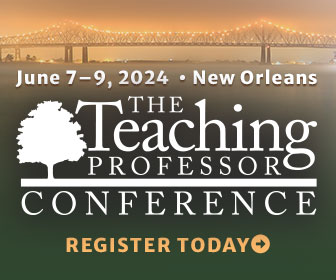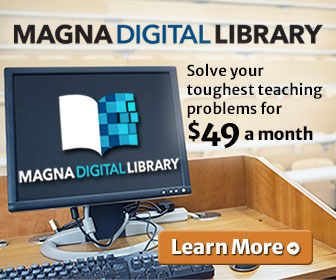I often tell faculty interested in online teaching that it requires a fundamental change in mindset from content creator to content curator. Faculty are used to creating their lectures from scratch for face-to-face courses, but the wealth of good educational content on the web makes that a waste of time for most purposes. Unlike face-to-face lectures, digital learning content is preserved and thus can be reused. This means that an instructor's value is not in the knowledge in his or her head but rather the abilities to discern good from bad content and to organize resources and modules into a format that creates learning, including content created elsewhere.
There are a variety of places to find free content for an online course, including YouTube for video and OpenStax (http://cnx.org/) for textbooks. But there are also places to find complete lessons. These lessons often combine videos, quizzes, links, and text for an overall learning experience. If using an entire lesson from an outside source feels like cheating, instructors can use parts of these lessons or draw ideas from these lessons for formulating their own lessons.
The first place an instructor should probably visit before looking for educational content is the Creative Commons website, which explains various license types and how the material can be used and attributed. The site also provides direction on how to license your own material that you might want to add to an educational repository (https://creativecommons.org/use-remix).
Here are some of the best places to find online teaching content:
Search Sites
OER Commons (https://www.oercommons.org). Open Educational Resources (OER) Commons is probably the best search engine for finding open content and lessons online. It draws from over 120 partners to catalogue over 30,000 items. Users can search by subject, education level, and content type, and each piece of content is given both a description and user rating to help you determine what you might want.
Search Creative Commons (http://search.creativecommons.org): Search Creative Commons allows you to search a variety of sources, from the entire web through Google, to image and video repositories for Creative Commons licensed material. You can also search by repository, such as Flickr for images, YouTube for videos, and Europeana for open textbooks.
Open Culture (http://www.openculture.com): Open Culture is a search engine for a wide variety of open educational resources, such as free courses, textbooks, movies, and podcasts. You can also search lessons by speaker, such as Richard Dawkins, Carl Sagan, and Toni Morrison.
Merlot (https://www.merlot.org): Merlot was the first well-known open education search engine, and it is one of the most comprehensive. It draws from a variety of sources, such as MIT Open Education, and includes user reviews. While well worth searching, the content tends toward the traditional text-based side, so it is often not designed for the web medium.
Lesson Repositories
TedEd (https://ed.ted.com): The people who brought you great educational videos have now bundled those videos with quiz questions, further resources, and discussion questions to form whole lessons. Over 215,000 lessons exist on all topics, and there is even a function that allows you to customize the material to create a new lesson.
Open Course Library (http://opencourselibrary.org): The Open Course Library provides content on a variety of open online courses. These often include free access to university courses as well as downloadable material to use in your own course under a Creative Commons license.
Wikiversity (http://wikieducator.org/Main_Page): Wikiversity has a huge repository of lessons and other educational content created by teachers from around the world. All the material is right there on the website, and there are also opportunities to get involved in open projects with other educators through WikiEducator (http://wikieducator.org/Main_Page).
Buy and Sell
If you wish to try your hand at buying and selling lesson content, there are a couple of places to look:
Teachers Pay Teachers (https://www.teacherspayteachers.com): As the name suggests, this site is a marketplace for teachers to buy and sell lesson material. In addition to the fairly comprehensive resource library, the site has a powerful search engine that allows you to narrow your search by grade, subject, content type, and cost. There are also user ratings and reviews of each lesson to help you determine whether it suits your needs.
HMH Marketplace (https://marketplace.hmhco.com): HMH Marketplace is a new initiative by Houghton Mifflin Harcourt that allows teachers to post material for sale. The prices range anywhere from a few dollars to hundreds of dollars based on the material. The content can be used in both face-to-face and online classes.
Take a look at some of these resource sites to find material and ideas for adding to your courses or sharing with others.





